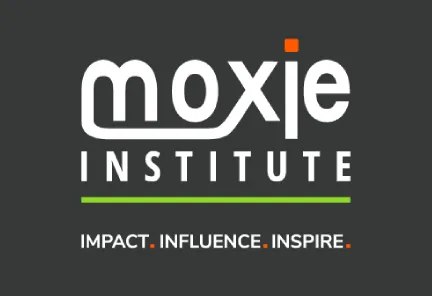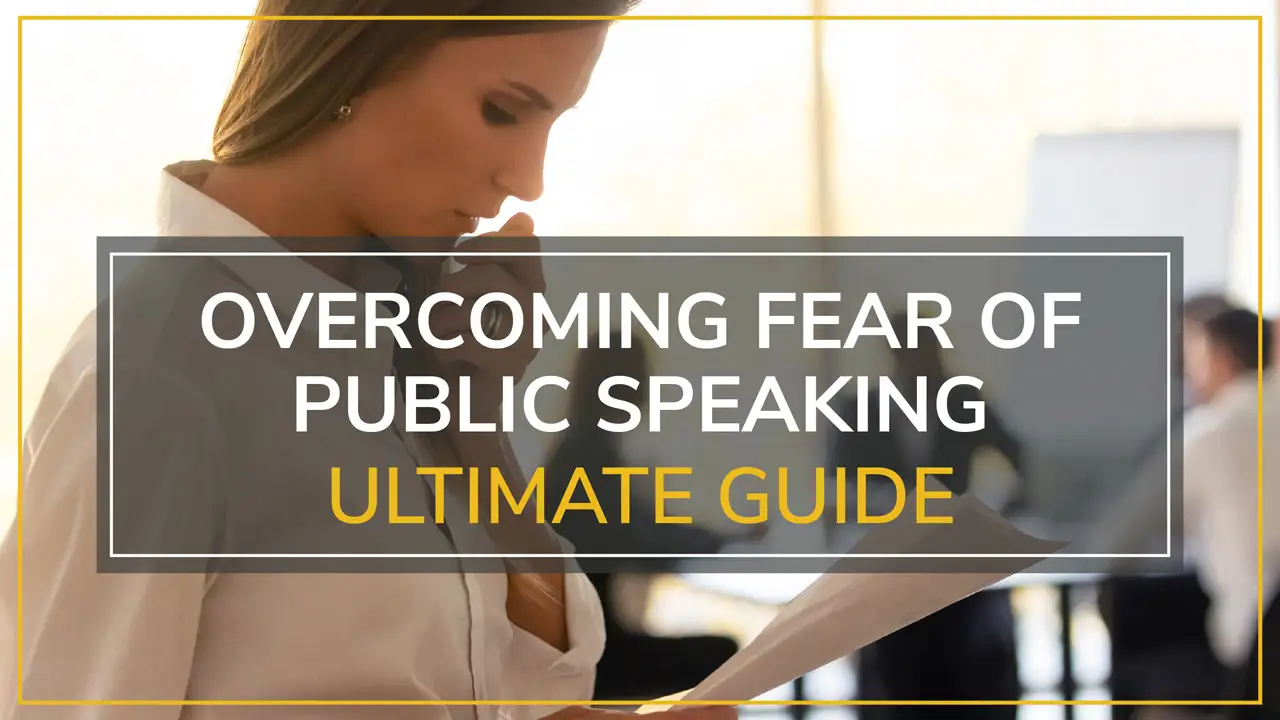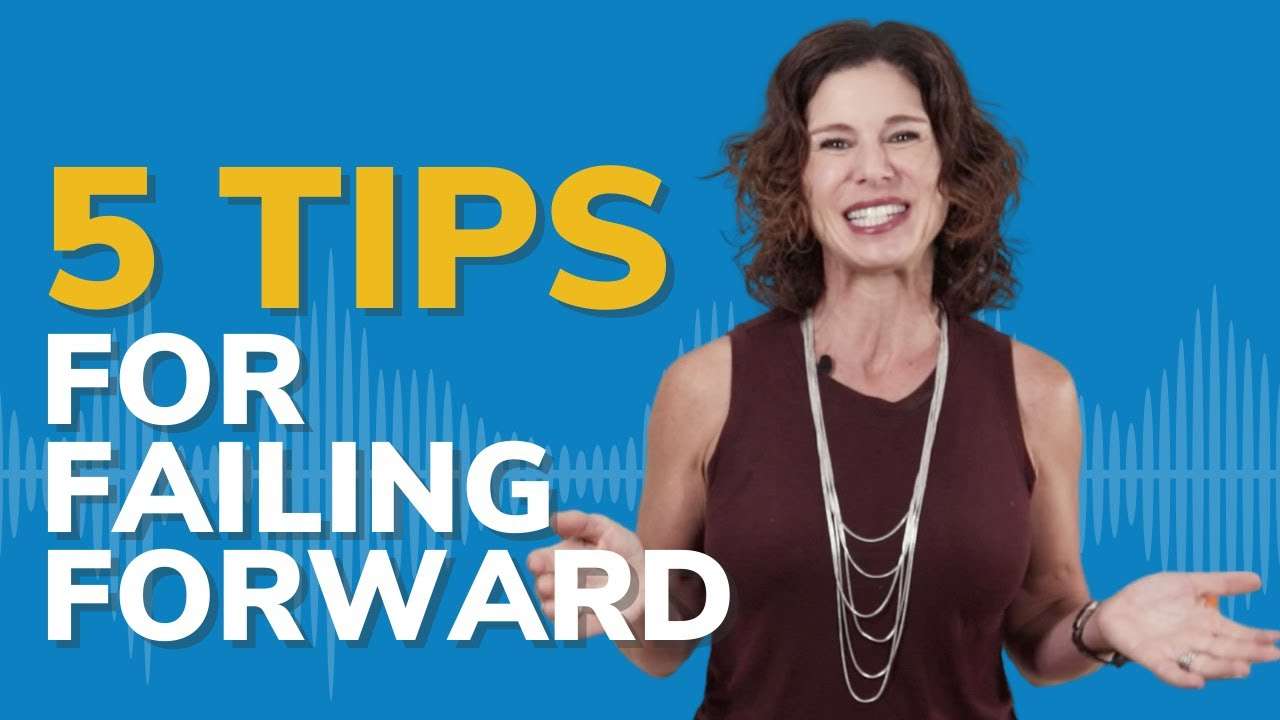By now, it’s a common understanding that public speakers are valuable assets. But what about public speakers that can do more than just talk well in front of an audience?
What about speakers that can work magic like the Churchills, Martin Luther Kings, and Oprah Winfrey-types?
That group doesn’t just speak—they inspire.
They have skills that are coveted by the people that don’t have them and they’re treated like a national treasure.
Oftentimes the difference is made by the ability to manage a single human emotion: fear.
You want to get past that, don’t you?
You want to find out how to break through that wall of fear that separates the Goods and the Greats. You want to find out how to make it less scary. You want to find out how to be heard, be taken seriously, and make a great impression among your colleagues and clients.
Well, fear no more—this is the ultimate, ultimate guide to overcoming the fear of public speaking! This is the analysis that will end your paralysis. The article that will ax your anxiety. The guide that will give you grit! You get the idea.
Table of Contents
ToggleAN OVERVIEW ON THE FEAR OF PUBLIC SPEAKING
Glossophobia. There it is. The name for this condition that most people have but don’t know what it’s called. The word glossophobia derives from the Greek word glossa, meaning tongue, and phobos, fear or dread.
If you suffer from this condition, you are a glossophobe.
Symptoms of this delightful, crippling condition include but are not limited to:
- An increase in blood pressure
- Sweating
- Dry mouth
- Shaking
- And too many other debilitating thoughts to list here
So the fear of public speaking is a far cry from a brief bout with anxiety. This is a truly multifaceted and crippling thing.
It’s physical, it’s mental, it’s emotional—an awful trinity of not feeling great. But once you know what is going on and why, it becomes a lot easier to understand how to overcome it!
Physiological
During a glossophobia “attack,” the autonomic nervous system is hyperaroused. This is the part of you that is free of conscious control. It’s the reason that you don’t have to think about breathing.
It’s also the reason you start acting in ways you can’t control once fear sets in.
Mental
Thoughts become muddy and unclear. Some speakers can’t even think at all when they’re seized by the fear of public speaking. Worse yet, sometimes the thoughts have nothing to do with their presentation at all. Instead, they’re drowning in a vortex of thoughts that catastrophize their situation.
What if I bomb? What if I stutter? What if I lose my place? What if there’s a heckler? What if they laugh? What if, what if, what if…
Emotional
“Fear” would be an oversimplification of the emotions that come out of the fear of public speaking. Besides fear, there’s shame, dread, anxiety, self-loathing, and perhaps even resentment for whoever put the speaker up to the task in the first place.
Understand that when we say “fear” we’re talking about a complex multi-emotional experience that shows up differently for everyone.
Ironically, it’s these three elements of the fear of public speaking that are the key to overcoming it.
But that’s something we’ll expand upon a bit later. For now, let’s look at the real-world cost of public speaking anxiety.
THE UNSEEN CONSEQUENCES OF LIVING IN FEAR
Someone that fears public speaking logically fears opportunities to present. And presentations are a big part of career advancement, especially when you start getting into the upper echelons of a company.
Rather than just being a condition that makes a public spectacle out of someone that has stage fright, there’s a real-world cost attached to the fear of public speaking, both to the speaker and to the company they would be speaking on behalf of.
First Of All: You’re Not Alone
Exactly how many people in the general population suffer from glossophobia is elusive. The internet has largely embraced a statistic of 75% of the population. It’s believable and it’s comforting to a degree. Yet there are plenty of studies that place the percentage closer to 15-30%. If that lower number is true, it’s a testament to the power of fear to create overblown, contrived obstacles.
The Fear Of Public Speaking Cuts Wages By 10%
Studies show a startling disadvantage to those with social anxiety and this makes sense considering interacting with others is the core of any corporate landscape.
From what takes place in the boardroom and the pitch room to the many general meetings with clients and colleagues and teams. The higher you climb, the more meetings and presentations there are, and someone seized with the fear of public speaking will be avoiding or botching many of them.
It Inhibits Your Promotion To Management By 14%
Your superior sits you down. You’re told that you’ve got what it takes to help run the company from a more direct position. You’re told that they appreciate your skillset and know you can handle almost anything—except speaking in front of an audience.
And that may be the kiss of death for your promotion.
Executives don’t want to promote you to their ranks and then hire a separate person to do your talking for you. They want the complete package in one person.
Imagine the president of the United States traveling and making appearances but having someone else give his speeches because he’s got presentation anxiety. Yeah, that’s not how you want to look.
The reality is, that a fear of public speaking is an obstacle to your path forward—and you can overcome it!
WHICH BEGS THE QUESTION: “WHY AM I AFRAID OF PUBLIC SPEAKING?”
Where is this fear of speaking in public coming from?
Is it something you were born with? In a manner of speaking, yes.
You might find that you’re not quite so afraid of speaking to people. You talk to people every day. You greet your friends—quite possibly several at once in a group—without breaking your stride. The real fear could be a fear of being judged adversely by the unknown or less-trusted group you’re speaking to.
There’s a psychological and a biological basis for this fear.
Survival
In the days of caves and spears, the survival of an individual human depended on the community. To be exiled or cut off from a community meant death.
So there’s a strong mental link between the approval of your peers and your own survival.
There’s something about being the center of attention of a group expecting you to speak that makes the untrained brain feel threatened.
And your body and brain are both programmed to take threats to your survival very seriously. The shaking, the dry mouth, the jumbled thoughts—they’re all part of fight-or-flight.
The human brain figured out a long time ago that it’s better to assume that something that might be a threat is a threat. That was good and well for the time that a rustle in the bush might be a saber-toothed tiger, but it hasn’t aged well.
Now, these ancient mechanisms try to tell us that there are ferocious predators around every corner when we feel even a bit of normal anxiety.
They still have their use of course, but most of the time they act more like that one friend who tries to talk you out of doing anything fun.
Situational
People may feel the fear of public speaking on one occasion but not on another. A variety of factors contribute to this, like the subject matter for example.
If you were to give a presentation on your favorite hobby, you might find your fear of public speaking gone.
You may even be able to give a presentation without any notes. This is something you know. It’s part of who you are and what makes you tick. You feel confident. You feel passionate.
Ah, but what if you were asked to give a presentation on something unfamiliar?
Imagine you just found out yesterday that there’s a new intricate tax law affecting marine conservation, and you’re expected to give an “exciting and in-depth presentation” about it.
Did your pulse just go up? Unfamiliar subject material will do that.
Your audience may also determine your fear levels. It’s one thing to speak in front of the people you see at lunch every day who know you and what you do. It’s another to be a complete stranger in front of people you’ve never met and never worked with in their industry.
In general: the most fearful presenters lack experience and don’t practice.
If you don’t give presentations often or dread doing so every time, it’s inevitable that you will be battling nerves—especially if you’re presenting to senior management.
The good news is that this isn’t your fault and it can be reframed as a positive thing: The more “stage hours” you log, the more your confidence will increase. Not only that, but the more times you rehearse, the easier the entire experience will feel.
So rather than feeling cursed with glossophobia, just know it’s a temporary feeling that you can overcome!
Believe it or not, there are some factors in your fear of public speaking that could be 100% self-inflicted.
There’s a fair percentage of people tasked with giving a presentation that has never been told how a great presentation is supposed to be put together.
A poorly constructed presentation outline (or not having one at all) will yield the same result: speaking anxiety and poor performance. That doesn’t reflect on your skill as a speaker—anyone who doesn’t feel prepared struggles.
Knowing how to outline a speech and refine it with a keen eye properly will make a world of difference to both your confidence and how professional you come across.
HOW TO STOP FEAR EVERYWHERE IT STARTS
Fear seems like it’s one big ugly monster, doesn’t it?
But the truth is that it has a lot of moving parts, more like a pocket watch. And like anything involving gears, when one component moves, they all move. So if you disrupt one part, you can disrupt the whole thing!
Instead of succumbing to fear, here’s how you can take control of your FATE.
F – Function (physiology)
A – Action (behavior)
T – Thinking (cognition)
E – Emotion
The mind-body connection is the reason that fear can quickly overwhelm you.
Most folks think that the downward spiral starts with the Emotion of fear, which in turn fills your Thinking with racing thoughts, and then your pulse pounds and you sweat (Function) and you’re a stammering, choking mess (Action.)
The reality is that any one of these can kick off the rest.
A rising heart rate (Function) can lead to anxious thoughts or fearful emotions, a moment of being tongue-tied (Action) can trigger a rapid pulse, self-doubting thoughts, and the emotion of fear. An otherwise calm body can be upset by overthinking (Thinking) that kicks off all the physiological effects of fear.
But get this—the bad news is also the good news.
You can calm down the entire mind-body circuit if you can bring calmness and clarity to any one of these four areas. Sure, when one gear moves, they all move. But when one gear stops, they all stop.
The easiest and most effective way to calm down a reeling mind and body is by making the Function our entry point. This involves a technique called diaphragmatic breathing.
Diaphragmatic Breathing—Why and How
What is your breathing like when you’re in the grip of fear?
If you’re breathing at all, your breaths are shallow and rapid. It feels like you’re only using the “top” half of your lungs. For all that work, barely enough air is coming or going for you to speak.
This kind of breathing is a natural part of fight-or-flight, a state in which every spare shred of energy is being allocated to survival, not speaking.
Diaphragmatic breathing is the opposite of this.
Your diaphragm is a large muscle that sits beneath your lungs and it’s used to draw air in and out. You consciously use your diaphragm to breathe deeply from the bottom of your lungs to the top and you do it slowly.
This signals the autonomic nervous system that it’s okay to step down from red alert and switch from fight-or-flight to rest-and-digest, a state more hospitable to thinking and speaking.
This means that you can be in the middle of a fear-induced “panic attack” and induce a state of calm and focus.
This is why diaphragmatic breathing is taught to soldiers so that they can keep a level head in the heat of combat. People that suffer from PTSD that employ diaphragmatic breathing have also been shown to benefit.
Exercise: Try It For Yourself
Take a moment to notice how you’re breathing right now.
You probably haven’t even been aware of it. Take a deep breath and notice the difference in how much more of your lung capacity you’re using.
It’s time for another deep breath, but this time, visualize your breath filling the bottom half of your lungs first. You might notice that this causes your stomach to protrude. This is why yogis have called this “pot-shaped breathing.”
If you feel all your breath just in the upper half of your lungs, AKA your chest, then, there’s a simple technique to help:
Many first-timers benefit from laying flat on their back and resting their hands, or ideally, something heavy like a book or laptop, on their stomach as they practice. If you feel your hands or the object raise up from being pushed by your stomach as you breathe in, you’re doing it right.
Once you’re used to bringing air into all of your lungs, it’s time for the actual technique.
- Breathe in for a count of 4
- Hold for a count of 4
- Exhale for a count of 6
- Repeat 5-10 times
- Then as you start to see the benefits, repeat for 5-10 minutes
Reframing Your Nervousness
Oh, the joys of nervousness (Function.)
That utter panic before some looming situation begins. There’s nothing like the emotional experience of fear that feels like you’re about to be attacked by a grizzly bear—even when you actually aren’t.
We all hate feeling nervous right?
But look at those symptoms a little more closely. Don’t they seem familiar?
Didn’t you feel that way when you were getting on a terrifying but exciting rollercoaster?
Or seeing a new movie you were counting down the seconds to?
Or stepping through a “haunted house” during Halloween?
Funny thing. In those instances, all that trembling and sweating was kinda fun. That’s because you didn’t call it fear.
You called it excitement.
Fear and excitement are very close cousins. The difference we’re interested in is that fear takes power away from you, but excitement empowers you.
So if you want to find extra empowerment during moments of nervousness, you need to actively reframe your nervousness as excitement.
How do you do this?
A big part of it is flipping the content running through your mind. When you’re having a fit of nerves, you’re very likely telling yourself under your breath, “I’m nervous. I’m scared,” and so forth.
Stop that negative flow and change it to “I’m excited! I can’t wait to do this! I’m digging the adrenaline rush!” Say it under your breath. If you’re in your car, hell—scream it and pump your fist (without looking like you’re flipping off other motorists).
While we’re on the subject…
Changing Your Inner Dialogue
Spoken words have power.
Just ask every magician that has invited the audience to say the magic words. Hocus Pocus! Abracadabra! Ok, but seriously—the things that you say out loud have a very real effect on your experience.
This is because what you say is closely tied to what you think.
We think words. We speak words. What we think has a strong effect on what we feel. What we say has an effect on what we think, which affects what we feel. See the links in the chain?
Up until this moment, you might not have paid close attention to the thoughts that cycle through your head. But listen closely to how you talk to yourself.
Do you keep hearing things like:
- You can’t do this
- You’re not good enough
- You’ll never be able to do this
- You’re a failure
Would you keep in contact with someone that talks to you like that? Of course not, you have more self-respect than that.
And so you shouldn’t allow your inner voice to talk to you like that either. You can change that inner dialogue by speaking to yourself out loud.
But what should you say?
A healthy first step is saying the opposite of any negative self-talk that arises in your mind. But we want to do better than that. We want to be proactive, not just reactive.
Visualization
Visualization isn’t just daydreaming. It’s not wishful thinking. It’s a mental technique used by athletes, actors, professionals, and an entire host of successful people across a wide spectrum of industries and disciplines.
The power of visualization is grounded in both science and psychology. Under the direction of Dr. Stephen LaBerge, Stanford University sunk an impressive amount of time and money into researching the dreaming brain, especially the unique phenomenon of lucid dreaming.
Since a lucid dreamer is aware that they are dreaming while they are dreaming, LaBerge was keen on finding out if practicing a skill in the dream state paid any benefits toward practicing the skill in waking life.
For clarity, LaBerge was paying test subjects to dream about practicing an activity or skill to see if it made them better at it in real life.
The results were overwhelming.
Practicing in the dream space was just as valuable as practicing in real life. This put LaBerge’s work on the map for establishing the brain’s ability to simulate waking reality.
You may not be a lucid dreamer, but you do have a brain that is capable of picturing and simulating reality, including any reality you would like to experience and the steps you need to take to get there.
In a very real sense, visualization is practice. You get to practice everything that you have control over.
When you are on the stage or on camera presenting to an audience, there are a number of things you have no control over.
- You can’t control your audience
- You can’t control their response—or lack of response—to your message
- You can’t control any interruptions
- Etc.
But you have 100% control over you.
Visualization allows you to practice what it feels like to be calm and poised. You get to rehearse these fear-fighting feelings.
Visualization allows you to picture:
- How things could go
- How you want things to go
- How you don’t want things to go
- How you could positively respond to all three
Once you’ve mentally rehearsed such things enough, you won’t need to overthink them in the moment. You get to switch to “autopilot” where you can devote all your bandwidth to your delivery.
If you think that sounds silly, consider this: You’re constantly visualizing whether you realize it or not.
You’re reading this guide because you likely visualized a situation you don’t want to be in.
It hasn’t happened yet, you have no idea how it would actually go, but you pictured yourself as a shaking, sweating mess, and here you are now, actually starting to feel that shaking and sweating begin.
See? If you can send yourself into fight-or-flight, with your imagination without realizing it, imagine the good that focused, intentional visualization can accomplish.
At the very least, it’s a more valuable use of your mind than “doomscrolling” or constantly consuming hours of empty content online. Think about it. People are endlessly consuming banality through their phones.
How empty does something have to be for it to be always consuming but never getting full?
Information like this can point you in the right direction, but endless consumption will not get you where you want to be. You have to start building with your own inner resources.
From the physiological to the psychological, you actually have a wide range of tools at your disposal to turn your fear into something productive rather than debilitating.
To reiterate, the main benefit of remembering FATE is you can pick any aspect to focus on to start taking the edge off your fear. We don’t always have the space to visualize or the time to do diaphragmatic breathing, but you definitely will have the ability to work on one of them.
Of course, there’s managing your fear in the moment, and then there’s rewiring and strengthening your mind ahead of time to save yourself from even getting to that place.
THE MIND KILLER: OVERCOMING FEAR OF PUBLIC SPEAKING WITH THE RIGHT MINDSET
Fear is all in the mind, and building new habits and mindsets takes time.
But just like someone new to exercise who is at risk of overdoing it and getting injured, you want to make sure you build the right habits the right way so you build the right mindset that will last.
The goal is to make sure you make the most of every moment so that you build a super highway of resilience.
To start with:
Stop Thinking About Yourself
Let’s take a moment to peer into the mind of a nervous presenter that’s about to appear before an audience. It’s quite the tornado in there. Mingling with the spiraling airborne barns, trees, and cows are a series of thoughts:
I don’t like being watched
I don’t like all those eyes on me at once
I don’t like the spotlight
I’m afraid of what they’re all thinking
What do all those thoughts have in common? That one lonely, isolated letter—I.
Which is rather odd. If Peter P. Speaker is giving a presentation at work, there is a 0% chance that there’s a sign nearby that says THE PETER P. SPEAKER SHOW!
There is also a 0% chance that anyone in the audience showed up or tuned in just to see Peter. Sorry, Pete. Even if some of them are your friends or colleagues, they came to hear the information, not see you.
Let that sink in. Those whirling, swirling thoughts of doom of being judged by the audience ignore the fact that the audience didn’t show up to see or hear you at all.
They came for the information. They came to learn something that would better their careers or give them direction on what’s coming next.
The audience showed up for themselves.
The whole focus of a presentation isn’t you—it’s the audience. So take a cue from your listeners and be focused on them (just like they are.)
Try this: instead of seeing yourself as the reluctant star of the show, see yourself as a steward. You’re a waiter at a five-star restaurant and you want the guests to have a five-star dining experience.
Self-conscious “stars” will do everything they can to will their audience into invisibility.
They’ll avoid eye contact, they’ll stand stock-still on the stage, they’ll glue their faces to their slides or their notes, and all of this detracts from the audience’s experience and stokes fear in the precarious presenter.
A spirit of generosity, however, gets you speaking to the audience as individuals, looking them in the face, moving and gesturing so that they’re truly “eating up” everything there is to offer.
Have you noticed that throughout the day, you talk to a number of your friends and colleagues, possibly several at once, but you don’t break a sweat?
Why is that?
You’re not focused on any speaking anxiety. You’re focused on communicating. Well, if you can comfortably and fearlessly talk to an audience of 3-5, you can comfortably talk to an auditorium or a virtual audience of any size.
”Yeah, but, no matter how many times I step up to speak, I still feel a measure of fear. There’s still tingles and butterflies.”
Prepare for the sobering truth: That’s the reality of being a public speaker.
There will be butterflies before your first speech. There will be butterflies before your hundredth speech. The only speaker that feels no speaking anxiety at all is dead, and nobody benefits from that.
Ever heard of the zebra turkeyfish? The name is funny, but the animal is no laughing matter.
Each one is covered by many poisonous spines, each of which delivers a searing sting that causes extreme pain, sweating, respiratory distress, and in significant doses, paralysis and death.
But the zebra turkeyfish still has predators. There are plenty of animals that will eat a zebra turkeyfish and put up with the pain of the venomous sting if they are hungry enough. The stings hurt, but the sting of hunger is worse.
Like the great motivational speaker Les Brown said, “You gotta be hungry!”
Your success as a speaker doesn’t depend so much on eliminating public speaking anxiety as it does on cultivating traits and characteristics that are stronger than the fear you feel.
Fear carries a nasty sting, but a speaker that’s hungry for the success of being a professional speaker always pushes through. Such a person chooses temporary pain over lasting regret.
Unlike deadly venom, the sting of fear can be lessened, as we discovered.
Resilience: Building a Braver You
There are two ways to make your obstacles less formidable: Either make them smaller or make yourself bigger.
You obviously can’t transform your problems like a magician, but you can make them smaller in your perception. A practical way of doing this is breaking a large project or problem down into more manageable pieces.
Some marathons have checkpoints spaced out across the course so that the runners can have a sense of progress and get cheered on by the spectators.
Give yourself “checkpoints” through a project so that you can look back and see that you’re moving right along even though the overall project may not be complete.
IT'S TIME TO FACE YOUR FEARS—AND WIN!
Well, look at you. You’ve read this far and now have the keys to the kingdom of fearing less.
How does your fear of public speaking feel now? Does it seem smaller? More manageable?
We have given you a proven roadmap—but you still have to make the journey yourself.
Makes you wonder what else you could do with someone to just point out where to take the next step—or even go with you.
You’ve got a lot here that will get you started. But if you find difficulty in continuing, you can look into Moxie’s varied avenues of public speaking training. It can be as personal as a public speaking coach, or as “hands-off” as a public live online class.
There are also other options to suit your needs. Whatever you decide, we thank you for using this guide and we hope that you will always speak with less fear and more Moxie!
TAKE THE FIRST STEP TO MASTER POWERFUL NEW SKILLS
Schedule an easy 30-minute call using our using our calendar. We’re here to help!








